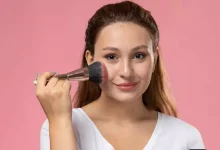
Acne, a prevalent skin condition, presents in various manifestations, each with its unique characteristics and management challenges. Among these, comedonal acne takes a prominent place, distinguished by clogged pores and the formation of comedones, commonly known as blackheads and whiteheads. Although it is not as inflammatory as some other acne types, it can still be a source of frustration and impact one’s self-esteem.
In this comprehensive guide, we will delve into the realm of comedonal acne, delving into its root causes, effective treatment modalities, and preventive measures. Whether you seek a deeper understanding of this condition, strategies to address existing comedones, or means to proactively manage it, this resource will offer invaluable insights and practical advice for dealing with comedonal acne effectively.
What Is Comedonal Acne?
Comedonal acne manifests as comedones, which are blocked pores primarily found on the nose, chin, and forehead. These pores become obstructed due to an overproduction of sebum, the presence of oil, accumulation of dirt, and the buildup of dead skin cells. The most prevalent types of comedonal acne are blackheads and whiteheads. Blackheads occur when the plugs of oil and debris are exposed to air, undergoing oxidation and turning black. In contrast, whiteheads develop when these plugs are situated deeper within the pores and remain white in color.
According to a study involving 44,689 participants from 27 different countries, 43.35% of them experienced a dermatological condition within the past year, with 12% of these cases being attributed to acne. Moreover, the overall prevalence of acne was recorded at 5.4%, making it one of the most frequently occurring skin conditions among individuals aged 18 and above. Comedonal acne, characterized as a mild form of acne, can often be effectively managed using home remedies.
In the subsequent section, we will delve into the causes and risk factors associated with comedonal acne.
comedonal acne causes,treating comedonal acne,preventing comedonal acne,comedonal acne treatment options,how to manage comedonal acne,blackheads and whiteheads treatment,skincare for acne-prone skin,non-comedogenic skincare products,preventing clogged pores,healthy skincare practices
Comedonal Acne: Causes And Risk Factors
Comedonal acne develops when the sebaceous ducts become obstructed by a combination of dirt, debris, and excess sebum production. While comedonal acne can affect individuals at any stage of life, certain factors can heighten the risk:
Dairy Consumption: Some studies suggest that the consumption of dairy products, including yogurt, milk, and cheese, may contribute to acne breakouts.
High-Glycemic Diet: Diets with a high glycemic index or glycemic load, characterized by an abundance of sugary and fatty foods like baked goods, junk food, and sugary beverages, may exacerbate acne.
Hydration and Skin: Paradoxically, excessive water intake, especially in humid conditions or when combined with the overuse of moisturizers, can potentially contribute to overhydrating the skin, possibly leading to acne issues.
Smoking: Smoking is associated with various skin problems, including acne and breakouts.
Cosmetic Products: The excessive use of makeup, oily skincare products, and hair pomades can clog pores and promote the development of acne.
Genetics: Comedonal acne may have a hereditary component, meaning that if it runs in your family, you are more susceptible to developing it.
Skin Practices: Squeezing existing comedones and using abrasive skin products like scrubs and chemical exfoliants excessively can worsen the condition and contribute to comedonal acne.
Beyond the common occurrence of blackheads (open comedones) and whiteheads (closed comedones), there exist various other types of comedones to be aware of.
Varieties of Comedonal Acne
comedonal acne causes,treating comedonal acne,preventing comedonal acne,comedonal acne treatment options,how to manage comedonal acne,blackheads and whiteheads treatment,skincare for acne-prone skin,non-comedogenic skincare products,preventing clogged pores,healthy skincare practices
Microcomedones
These are the tiniest forms of comedones, invisible to the naked eye. They serve as the initial stage in the development of blackheads, inflamed acne, or pimples.
Macrocomedones
Macrocomedones can exist in both open and closed forms, but they are notably larger in size.
Giant Comedones
Giant comedones are sizable blackheads, often measuring from a few millimeters to approximately 2 centimeters in diameter. This type of comedone tends to be more prevalent among older adults.
Solar Comedones
Also referred to as senile comedones, these are induced by excessive sun exposure. Solar comedones can manifest in both open and closed varieties, and their size can range from small to large. This type of comedonal acne is commonly observed in older adults.
Once we familiarize ourselves with their characteristics, identifying comedones becomes a straightforward task.
How To Identify Comedonal Acne
comedonal acne causes,treating comedonal acne,preventing comedonal acne,comedonal acne treatment options,how to manage comedonal acne,blackheads and whiteheads treatment,skincare for acne-prone skin,non-comedogenic skincare products,preventing clogged pores,healthy skincare practices
Identifying comedonal acne involves recognizing the typical signs and characteristics of this common skin condition, which primarily consists of comedones, including blackheads and whiteheads. Here’s how to identify comedonal acne:
Appearance of Comedones:
Blackheads (Open Comedones): These are small, dark or black spots on the skin’s surface. They are open at the top and may have a visible black dot in the center.
Whiteheads (Closed Comedones): Whiteheads are small, flesh-colored or white bumps on the skin. They are closed and appear as raised, round bumps.
Location: Comedonal acne most often appears in areas with a higher concentration of sebaceous (oil) glands. Common locations include the forehead, nose, and chin, collectively known as the “T-zone,” but it can also occur on the chest, back, and other areas.
Texture: Comedones often have a distinct texture. Blackheads have an open pore with a dark or black tip, while whiteheads are closed and may have a white or flesh-colored appearance.
Lack of Inflammation: Comedonal acne is typically non-inflammatory, meaning it doesn’t involve redness, swelling, or pus-filled lesions. Instead, it mainly consists of clogged pores.
Multiple Lesions: Comedonal acne can manifest as multiple blackheads and whiteheads in the affected area, creating a bumpy or uneven skin texture.
Absence of Pain: Unlike inflammatory acne types, comedonal acne is usually painless and does not cause discomfort or tenderness.
Persistent Breakouts: Individuals with comedonal acne may notice a tendency for these types of lesions to reappear regularly, leading to ongoing concerns about clogged pores.
Possible Enlarged Pores: Repeated comedonal acne breakouts can contribute to the enlargement of pores in the affected area.
Consulting a Dermatologist: If you’re unsure about the nature of your skin condition or if it’s becoming problematic, consulting a dermatologist is advisable. They can provide a professional assessment and recommend appropriate treatments or skincare routines.
If you find yourself dealing with comedonal acne, rest assured that there are numerous effective treatment choices available to help you manage this condition. In the following section, we will delve into these options comprehensively.
How To Treat Comedonal Acne
Treating comedonal acne at home involves adopting a consistent skincare routine and incorporating specific remedies that can help unclog pores and reduce the occurrence of blackheads and whiteheads. Here are some effective home remedies to consider:
















